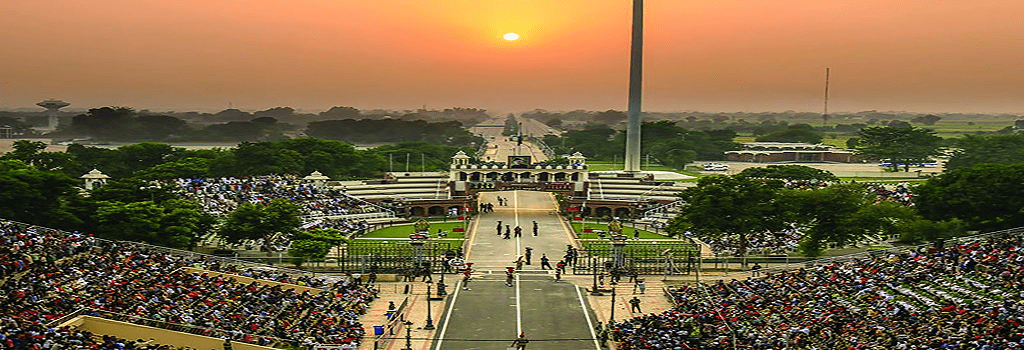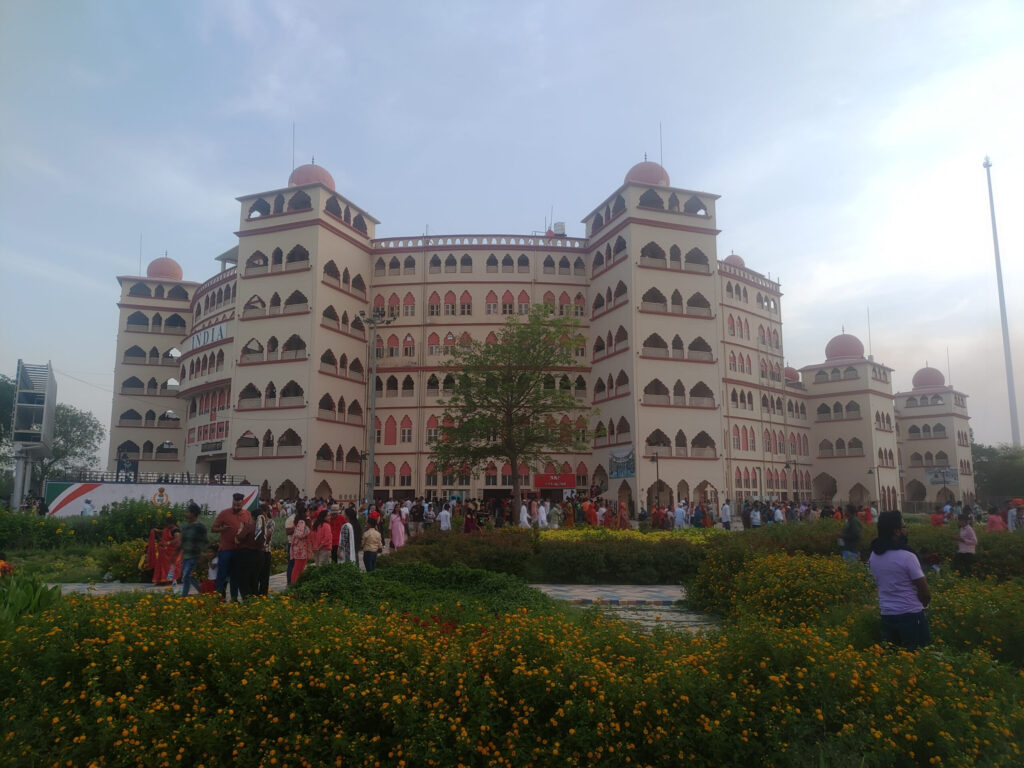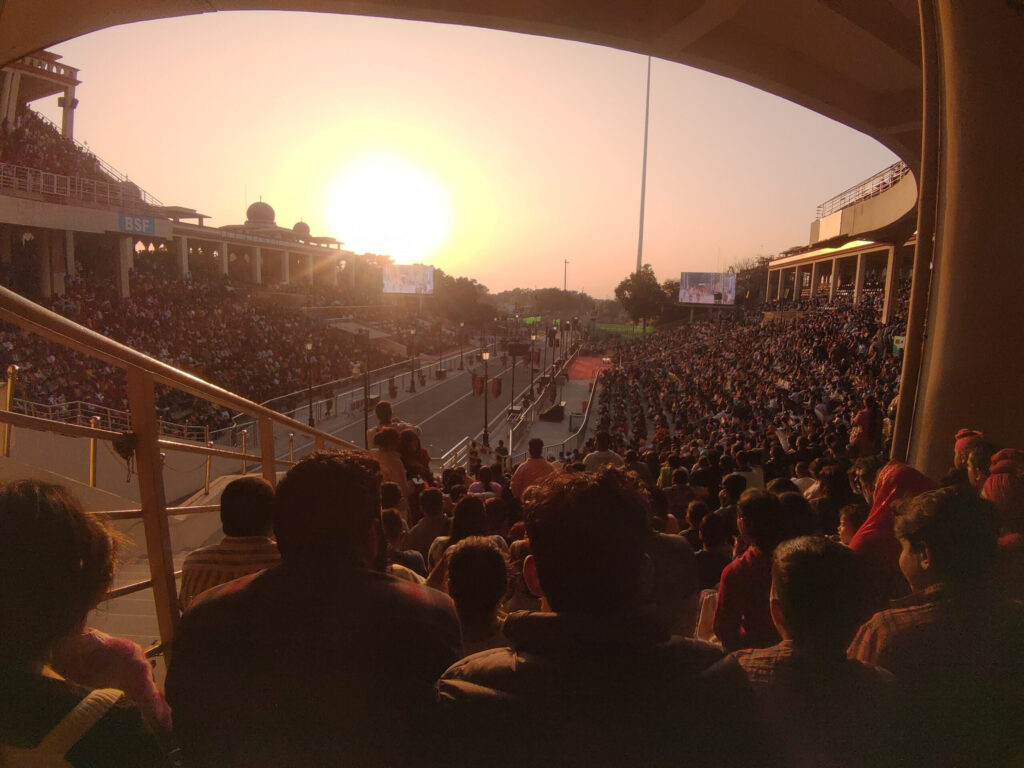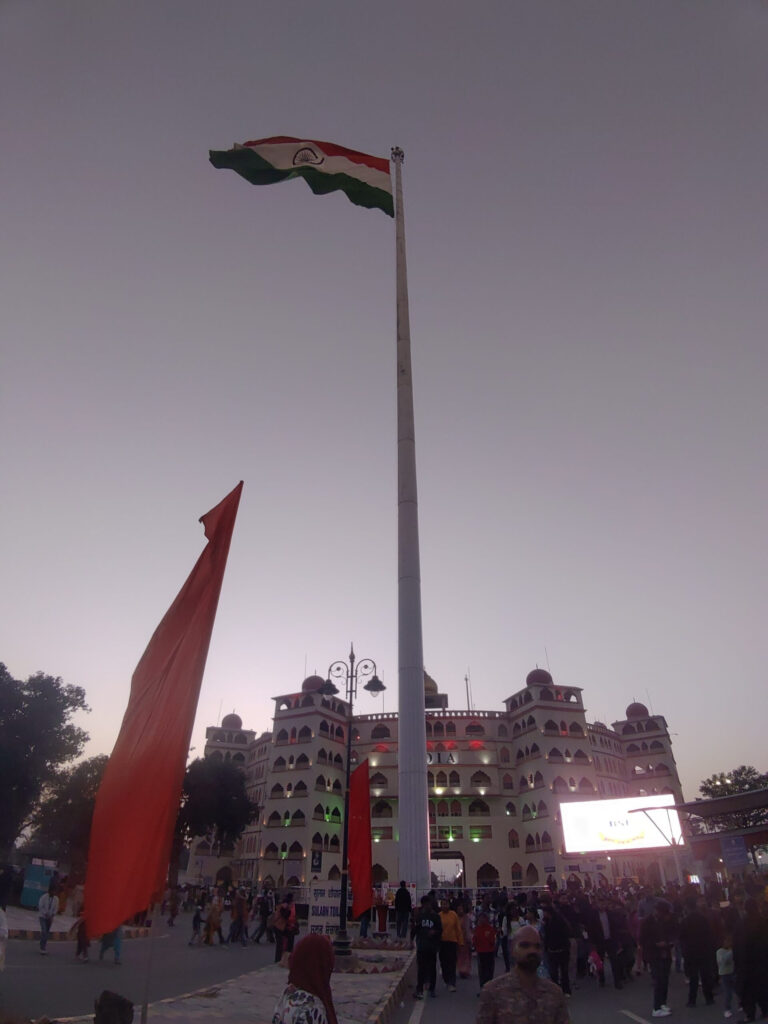Attari - Wagah Border

Indo - Pak International Border

Attari-Wagah Border

Indo - Pak International Border

India – Pakistan Partition – Where INDIA starts
The Attari Border is a significant international border between India and Pakistan, located in the Amritsar, State of Punjab, India, and the province of Punjab, Pakistan. This border is particularly famous for its Attari-Wagah Border Ceremony, a daily military drill that has become a symbol of national pride and patriotism for both countries.
Here’s an overview of the Attari Border:
Geographical and Historical Significance
The Attari Border is situated around 30 kilometers from the city of Amritsar in India and is adjacent to the town of Wagah in Pakistan. This border is one of the most well-known points of entry between the two countries. The border became internationally significant after the partition of India in 1947, symbolizing the division of British India into two nations.

The Flag-Lowering Ceremony also known as Retreat Ceremony
The Wagah Border Ceremony is perhaps the most famous feature of the Attari Border. Every evening, the border transforms into a stage for the famous Beating Retreat Ceremony, conducted jointly by India’s Border Security Force (BSF) and Pakistan’s Rangers. The ceremony, characterized by synchronized drills, high-stepping parades, and military gestures, showcases a mix of rivalry and mutual respect.
The ceremony involves:

This highly dramatic ceremony draws large crowds from both India and Pakistan, and although the ceremony is conducted with utmost discipline and respect, it also carries an underlying message of rivalry and national pride.
Border Crossing
Though the Attari Border is primarily a military zone, it also serves as an important crossing point for people and goods between India and Pakistan. The Attari-Wagah Integrated Check Post (ICP) was built to facilitate trade between the two countries. While movement across the border is strictly regulated, there are some avenues for trade and cross-border exchanges.
The Attari Border is a critical point for the movement of freight trucks and trade between the two nations. The Attari-Wagah railway station in India also serves as the terminus for the Samjhauta Express, a train that connects Lahore in Pakistan with Amritsar in India. However, this train service has been disrupted multiple times due to political tensions.
Historical Significance
The Attari Border was a key point of contention during the Partition of India and Pakistan in 1947, when the two countries were divided along religious lines, leading to large-scale migration, violence, and disruption. The border was initially drawn hastily, creating numerous challenges for the newly formed nations, and it remains a highly sensitive and militarized zone to this day.
Since independence, both countries have had strained relations, marked by conflicts, military standoffs, and diplomatic disputes. The Attari Border, as one of the most visible points of contact between India and Pakistan, has been a site of tension but also of hopes for peace and cooperation.

Border Security
The Attari Border is heavily guarded by India’s Border Security Force (BSF) and Pakistan Rangers. Both sides maintain a significant military presence, ensuring that the border remains secure and preventing illegal activities, such as smuggling or infiltration. Surveillance is also aided by modern technology, such as drones and electronic sensors.
Cultural Significance
Beyond its military and political importance, the Attari Border has become a symbol of national identity and pride for both India and Pakistan. It is also a site where many people from both sides of the border come to witness the Wagah ceremony. This event, in a way, showcases the complex nature of the relationship between the two countries—marked by both rivalry and respect for the shared history and cultural ties.

Conclusion
The Attari Border, with its historical, military, and cultural significance, remains a powerful representation of the complex relationship between India and Pakistan. It stands as a testament to both the tensions and the hopes for peace that have marked the two nations’ history since their partition. The Wagah Border Ceremony, in particular, continues to captivate people’s imaginations, symbolizing the desire for pride and respect amid a divided world.